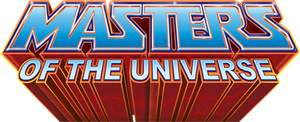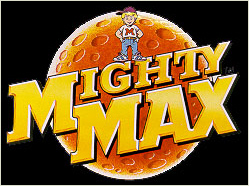Related Research Articles
Mego Corporation is an American toy company that in its original iteration was first founded in 1954. Originally known as a purveyor of dime store toys, in 1971 the company shifted direction and became famous for producing licensed action figures, celebrity dolls, and the Micronauts toy line. For a time in the 1970s, their line of 8-inch-scale action figures with interchangeable bodies became the industry standard.

Masters of the Universe is a sword and planet-themed media franchise created by Mattel. The main premise revolves around the conflict between He-Man and Skeletor on the planet Eternia, with a vast lineup of supporting characters in a hybrid setting of medieval sword and sorcery, and sci-fi technology. A follow-up series, She-Ra: Princess of Power revolves around He-Man's sister She-Ra and her rebellion against The Horde on the planet Etheria. Since its initial launch, the franchise has spawned a variety of products, including multiple lines of action figures, six animated television series, several comic series, video games, books and magazines, a daily newspaper comic strip, and two feature films.
Diaclone is a toyline by Takara Toys launched in 1980. It consisted of transforming vehicles and robots piloted by miniature, magnet-shoed figures spun off from the prior Microman toy line.

Microman was a science fiction toyline created, manufactured and marketed by Takara Co., Ltd. from 1974 to 1984 as well as from 1998 to 2007. The Microman line was a series of 3.75-inch-tall (9.5 cm) action figures with accompanying vehicles, robots, playsets and accessories. Unlike other toylines at the time, Microman figures were marketed as being the "actual" size of cyborg beings called "Micros" that hailed from a fictional planet known as "Micro Earth" and disguised themselves as action figures while on planet Earth.
GoBots is a line of transforming robot toys produced by Tonka from 1983 to 1987, similar to Hasbro's Transformers.
G.I. Joe: A Real American Hero is a military-themed line of action figures and toys in Hasbro's G.I. Joe franchise. The toyline lasted from 1982 to 1994, producing well over 500 figures and 250 vehicles and playsets. The line reappeared in 1997 and has continued in one form or another to the present day. It was supported by two animated series as well as a major comic series published by Marvel Comics.

The Super Powers Collection was a line of action figures based on DC Comics superheroes and supervillains that was created by Kenner Products in the 1980s.

Batman action figures have been produced since the 1940s. These action figures, inspired by the character's appearance in comics and serials, were created by DC Comics and manufactured by various toy companies. These figures were made of various materials such as wood, tin, and plastic. They were typically between 6 and 8 inches in height and featured movable joints that allowed them to be posed in various positions.

Mighty Max was a series of toys that were manufactured by Bluebird Toys PLC in the UK in 1992. The toys were similar to the earlier Polly Pocket toyline, but these toys were marketed primarily towards young boys. In Canada and the United States, they were distributed by Irwin Toy Limited and Mattel Inc. respectively. The original toyline consisted mainly of "Doom Zones" and "Horror Heads". "Doom Zones" were small playsets with a horror theme and featured miniature figurines of menacing creatures and the hero Max, a young boy with blond hair, jeans, a white t-shirt with a red "M" on it, and a baseball cap which also always had an "M" on it. The "Horror Heads" were smaller-sized playsets, also shaped like the heads of creatures and contained miniature figures. It was later adapted into a TV series, as well as a tie-in video game The Adventures of Mighty Max produced by Ocean Software for the Super NES and Mega Drive/Genesis.

Action figures based on the Teenage Mutant Ninja Turtles franchise have been produced by Playmates Toys since 1988. Staff artists at the Northampton, Massachusetts based Mirage Studios have provided conceptual designs for many of the figures, vehicles, and playsets and are credited on the packaging of the products they created.

Micronauts is a North American science fiction toyline manufactured and marketed by Mego from 1976 to 1980. The Micronauts toyline was based on and licensed from the Microman toyline created by Japanese-based toy company Takara in 1974.
The World of Springfield is a series of action figures featuring characters from the animated sitcom The Simpsons. The line ran between December 1999 and December 2004 and was released by Playmates Toys.
The Imaginext System is a brand of role-playing, adventure toys designed for kids 3 or older made by Mattel, under the label of Fisher-Price.
Secret Wars was a 1984-1985 line of action figures and playsets, launched as a tie-in between Marvel Comics and the Mattel toy company.
Princess of Power is a toyline created by Mattel. Among others, it features the characters of She-Ra and Catra on planet Etheria. With its launch in 1984, the toyline spawned a variety of products, including three lines of fashion action figures. The Princess of Power logo and characters are currently used by Mattel as part of the Masters of the Universe Classics toyline.
G.I. Joe is an American media franchise and a line of action figures owned and produced by the toy company Hasbro. The initial product offering represented four of the branches of the U.S. armed forces with the Action Soldier, Action Sailor, Action Pilot, Action Marine and later on, the Action Nurse. The name is derived from the usage of "G.I. Joe" for the generic U.S. soldier, itself derived from the more general term "G.I.". The development of G.I. Joe led to the coining of the term "action figure". G.I. Joe's appeal to children has made it an American icon among toys.

Disney Infinity is an action-adventure sandbox toys-to-life video game series developed by Avalanche Software. The setting of the series was a giant customizable universe of imagination, known as the Toy Box, populated with toy versions of iconic Disney, Pixar, Marvel and Star Wars characters.
References
- ↑ Lenburg, Jeff (1999). The Encyclopedia of Animated Cartoons. Checkmark Books. p. 244. ISBN 0-8160-3831-7 . Retrieved 6 June 2020.
- ↑ https://www.imdb.com/title/tt0402935/ [ user-generated source ]